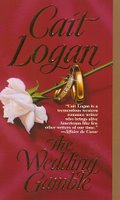Copy edits are so important and save time for everyone, if the author takes time to work with them. A copy edit occurs after the author has sent in a manuscript to the editor; the editor works on it and if acceptable, turns it into the production department. The production department assigns a copy editor to go over it and clear in a details that are mismatched, punctuation, etc. The finished copy edit is then sent to the author to correct problems, either with the storyline, or the work of the copy editor, such as punctuation.
This is a very important stage, creating the best possible set of galleys, or proofs, depending on the language used. Intense consentration is needed, and frequent breaks to refresh are necessary. I process a copy edit from my publisher in three stages:
1. When I first get a manuscript back from a copy editor (the editor's notes are also included), I make one pass to absorb his/hers style and major problems. At this point, I arrange my working area to include a pencil in a different color from what the editor and the copy editor have used, a sharpener for that pencil, a sticky pad, a dictionary/thesaurus, and in the notes I may have made to myself about the manuscript when it would be returned to me. (These notes are often ideas that occur after the manuscript has been sent to the editor for the first time. I save these in the same folder as the manuscript's chapters.)
I make a very careful, slow pass this first time. The sticky notes serve as flags that there is a problem needing attention, or notes to myself. Major problems are marked by a sticky note placed at the top of the page.
2. The second pass deals with catching anything not caught in the first one. It also utilizes what I have learned about the copy editor' s style. At times, copy editors miss punctuation errors, etc. that they may have caught in other places. It is important to standardize all. And they do make errors, just like anyone else. The second pass corrects even more.
3. This brings us down to finalizing corrections in the copy edit. If my sticky notes are still left at that point, it is usually something that requires and insert. It inserts are usually done by adding an extra page and labeling it with A, B., C., etc. This extra page would be inserted behind the original, such as Page 12 and Page 12 A. For example, Page 12 should contain a marker at line 10 that says Insert. Page 12 A should say Page 12, line 10. This is when you generally sit down at your keyboard and go to work, carefully making the insertions into the copy edit.
When sent to production, the copy edit should include author's notes on anything that might affect galley setting, such as All font is not uniform, please watch.
The production department then assigns a galley setter. The author will also have a chance to correct any errors in the galleys. However, these errors must be minimal because of the time and expense involved in changing errors. That is why the copy edit must be given intense attention, to minimize errors. If the errors are the cause of the author's inattention to detail, then there is the possibility of a percentage charged to the author for the problems.
Personally, I believe that when an editor and a copy editor have worked so hard on a manuscript to present it in the best way possible, that the author should comment appreciation and thank you for a job well done. If however, the copy edit is intrusive and ignores the author's style, then that should be noted to the editor. This may avoid future work with this copy editor. Or, it may serve to educate a new copy editor to be more considerate of an author's style. This is all within the control of the editor, and the publisher's production department, matching the author with a suitable copy editor.


